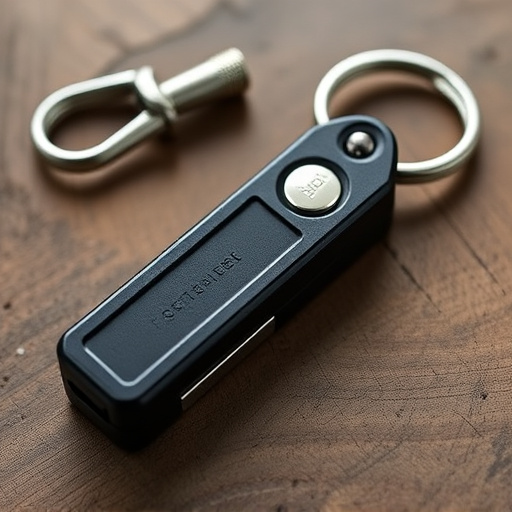Choosing the right self-defense keychain requires considering grip design, materials, locking mechanisms, and comfort for quick, secure deployment in stressful situations. Prioritize tactical grips, durable materials, versatile tools, and a snug fit for enhanced safety as outlined in this Self Defense Keychain Shopping Guide.
“Elevate your self-defense strategy with the ultimate guide to tactical keychain grip design. In today’s world, a compact and versatile tool can make all the difference. This shopping guide explores the art of combining functionality and protection in a small package. From durable materials to innovative locking systems, we’ll help you navigate the options. Learn how metal vs. plastic affects weight and longevity, discover key features for emergencies, and ensure ergonomic comfort for a secure grip. Get ready to empower yourself with knowledge before your next self-defense keyring purchase.”
- Understanding Tactical Grip Design for Self Defense Keychains
- Choosing Materials: Metal vs. Plastic for Durability and Weight
- Key Features: Locking Mechanisms and Emergency Tools
- Ergonomics and Comfort: Ensuring a Secure, Slip-Free Grip
Understanding Tactical Grip Design for Self Defense Keychains
Understanding Tactical Grip Design for Self Defense Keychains
When shopping for self-defense keychains, one crucial aspect to consider is the tactical grip design. This feature plays a significant role in ensuring your keychain not only serves its protective purpose but also offers reliable control and ease of use. A well-designed tactical grip allows for quick deployment and a secure hold, enabling users to defend themselves with speed and precision.
In the realm of self-defense keychains, the grip design can vary widely, from simple textured surfaces to complex mechanical mechanisms. Opting for a keychain with an ergonomic, non-slip grip ensures that your hand remains firm and in control during stressful situations. Additionally, some tactical grips incorporate advanced materials like high-friction rubber or metal alloys, enhancing grip strength and durability. This is particularly important when you’re navigating through challenging environments or using the keychain as a tool for self-defense.
Choosing Materials: Metal vs. Plastic for Durability and Weight
When it comes to self-defense keyring tactical grip design, choosing the right materials is paramount. Metal keychains offer superior durability and a robust feel, making them ideal for intense use and rough conditions. Materials like stainless steel or high-strength aluminum provide excellent resistance against impacts and corrosion, ensuring your self-defense tool remains reliable over time. Moreover, metal keyrings often feature precision-engineered textures and grooves that enhance grip, allowing you to deploy the tool quickly even in stressful situations.
In contrast, plastic keychains are lightweight and cost-effective, making them a popular choice for those seeking a more discreet option. While plastic may not offer the same level of durability as metal, it is suitable for everyday carry and provides a good balance between weight and protection. Advanced plastic polymers can also withstand wear and tear, maintaining their structural integrity even after prolonged use. When shopping for self-defense keychains, consider your specific needs and preferences to ensure you get a product that excels in both performance and comfort.
Key Features: Locking Mechanisms and Emergency Tools
When shopping for a self-defense keychain, one of the most crucial features to look for is a robust locking mechanism. This ensures that your defense tool remains secure and readily accessible when you need it most. Advanced designs incorporate tactical grips, offering improved control and precision during use. The ability to deploy emergency tools quickly can be a matter of life and death, making this an essential consideration in your self-defense keychain shopping guide.
Additionally, modern keychains often come equipped with versatile tools like glass breakers, metal detectors, or even mini flashlights. These features expand the capabilities of your keychain beyond self-defense, providing peace of mind in various situations. A well-designed locking mechanism and emergency tools make for a powerful self-defense keychain, offering users a sense of security and control.
Ergonomics and Comfort: Ensuring a Secure, Slip-Free Grip
When it comes to self-defense keyring tactical grip design, ergonomics and comfort are paramount. A well-designed keychain should fit comfortably in your hand, providing a secure and slip-free grip. This is essential for situations where you need quick access to your self-defense tool—whether it’s a pepper spray or a folding knife—without having to fumble through your pockets or bag.
Look for keyrings with textured surfaces or ergonomic contours that enhance your grasp. Materials like high-quality silicone or rubber can offer excellent grip and durability, ensuring you have complete control over your self-defense device during emergencies. In the Self Defense Keychain Shopping Guide, prioritize items that prioritize comfort and ergonomics to ensure you’re always prepared and confident in any situation.
When shopping for a self defense keychain, understanding tactical grip design, material quality, key features, and ergonomics is essential. This comprehensive guide has highlighted the critical aspects to consider, empowering you to make an informed decision. Incorporating a secure, slip-free grip and useful emergency tools can turn your keychain into a practical and effective personal safety device. With this knowledge in hand, you’re ready to navigate the market and choose the perfect self defense keychain tailored to your needs.
